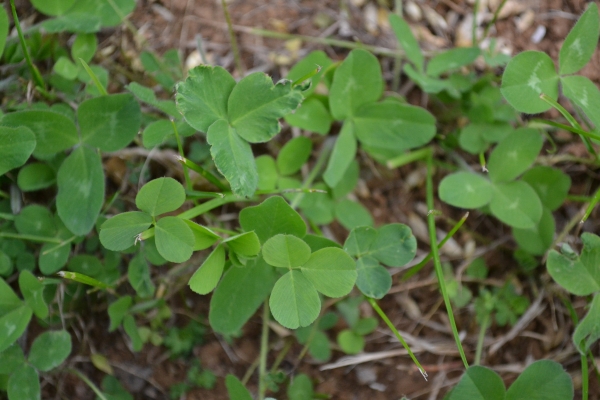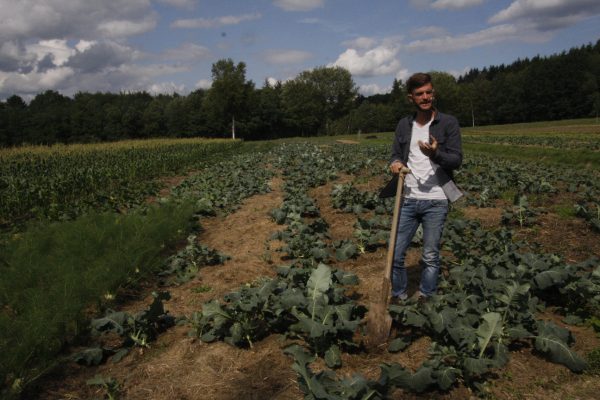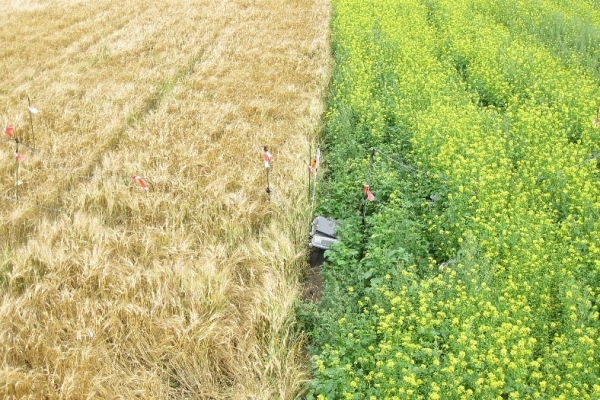Organic crop rotations
Horticulture
Resource explained
It is good practice to not grow the same crop family on a piece of land more than once in every four years in crop rotations. Exceptions are when a fertility-building crop such as grass/clover ley is grown for two or three successive years or when a perennial or biennial crop is grown. This Soil Association (SA) factsheet provides guidance to help you plan and manage your crop rotations. It covers:
- The role of a rotation.
- Conformance to rules and regulations.
- Crop rotations as part of cropping plans necessary for conversion to organic status.
- Required, recommended, permitted and prohibited practices according to SA standards.
- Factors to consider when designing a rotation.
- Green manure crops for fertility building (legumes and non legumes).
- Example of a typical rotation.
- Key considerations when planning a rotation.
- Rotations for disease, pest and weed control.
- Potential grant aid.
- Case study examples of rotations on organic holdings.
Findings & recommendations
- A good rotation will help you maintain soil quality, avoid pest and disease buildup, reduce weed problems, spread labour costs and reduce financial risks.
- When planning a rotation you need to consider factors such as nutrient budgets, soil type, financial budget, labour and machinery demands, balancing the range of crops and monitoring the rotation.
- Grass/clover leys encourage improvement in the soil structure over time, so you achieve greatest benefits after a long fertility-building period. This also ensures that nutrient levels have more time to build up before the rotation enters the cash-cropping phase.
- Using rotations will help you reduce the levels of many diseases and control many soil-borne nematode pests.
- Alternating leafy crops that compete well with weeds with those that do not compete well or do not germinate quickly will keep weeds in check.
- Where vegetables are grown on arable farms, it may be possible to claim set-aside payments for land on which grass/clover leys are used for fertility-building.
- This document includes useful quick reference tables on: the vegetable plant families; examples of fertility-building green manure crops; diseases that can be controlled by rotations; and pests that can be controlled by rotations.
Related articles
In October's Agricology Vlog, Richard Smith from Daylesford Organic Farm revisits a site on which he has harvested barley and seeded a grass ley.
Guidance from the OK-Net Arable project to help you manage perennial weeds effectively through crop rotations.
A factsheet with useful tips to help you assess and plan grass and legume ley rotations; includes rules, examples and management guidance.
Practical recommendations for improving soil phosphate (P) availability for your crops; maintaining levels and maximising on P inputs.
Organic Grower article explaining a system German grower Johannes Storch created using cover crops, grass and silage as mulch and the MulchTec planter he and...
A GREATsoils factsheet detailing the main green manure species suitable for use in high value vegetable and salad rotations and summarising benefits they can bring
This abstract explores how the organic practice of using diverse rotations to reduce pest and disease levels in following crops can be applied on non-organic...
Part two of two detailed informal articles looking at the practicalities of applying a no-till system in an organic horticultural operation and how it relates...
Part one of two detailed informal articles looking at the practicalities of applying a no-till system in an organic horticultural operation and how it relates...










